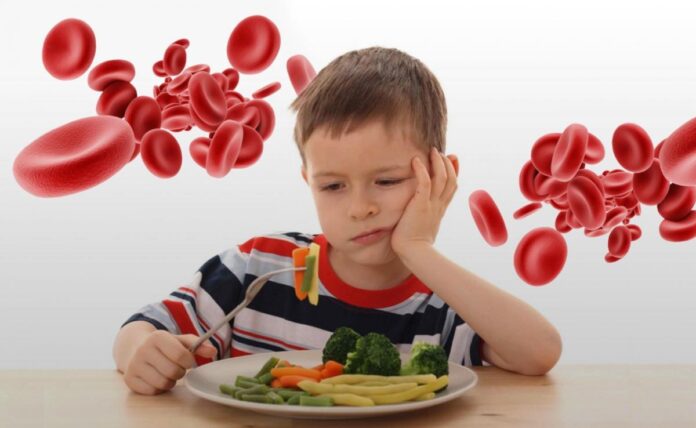Childhood anemia is a condition where a child has a lower than normal number of red blood cells or a low concentration of hemoglobin, the protein in red blood cells that carries oxygen throughout the body. This condition can affect a child’s growth, development, and overall health. Here’s an overview:
1. Causes of Childhood Anemia
- Nutritional Deficiency: The most common cause is iron deficiency, which occurs when a child doesn’t get enough iron in their diet. Iron is crucial for producing hemoglobin. Other deficiencies, such as vitamin B12 and folate, can also lead to anemia.
- Inherited Disorders: Conditions like sickle cell anemia and thalassemia are genetic disorders that affect the production of normal red blood cells.
- Chronic Diseases: Diseases such as kidney disease or chronic infections can interfere with the production of red blood cells.
- Acute Blood Loss: This can occur due to injuries, surgery, or heavy menstrual bleeding in adolescent girls.
- Bone Marrow Problems: In rare cases, anemia can be due to bone marrow diseases that prevent the production of enough red blood cells.
2. Symptoms of Childhood Anemia
- Fatigue: The most common symptom is fatigue or tiredness because the body’s tissues are not getting enough oxygen.
- Pale Skin: A child with anemia may appear paler than usual.
- Weakness: The child might feel weak or lethargic.
- Breathlessness: Even mild physical activity can make the child feel short of breath.
- Irritability: An anemic child might become more irritable or fussy.
- Rapid Heartbeat: The heart works harder to pump oxygen-rich blood, leading to a fast or irregular heartbeat.
- Dizziness or Lightheadedness: Low oxygen levels can cause dizziness, especially when standing up quickly.
3. Diagnosis
- Blood Tests: A Complete Blood Count (CBC) is usually the first test, which measures the levels of hemoglobin and red blood cells. Further tests may be done to determine the specific type of anemia and its cause, such as serum ferritin levels for iron deficiency.
- Medical History and Physical Examination: Doctors will also review the child’s medical history, diet, and any symptoms they’re experiencing. A physical exam can also provide clues to the underlying cause.
4. Treatment
- Dietary Changes: For anemia due to nutritional deficiencies, increasing intake of iron-rich foods (like red meat, beans, and fortified cereals), vitamin C (which helps with iron absorption), and other necessary vitamins is essential.
- Iron Supplements: These may be prescribed to quickly restore iron levels in cases of iron deficiency anemia.
- Treating Underlying Conditions: If anemia is caused by another health issue, treating that condition is key to improving the anemia.
- Blood Transfusions: In severe cases, or in the case of blood loss, a blood transfusion may be necessary.
- Medication or Surgery: For anemia caused by chronic diseases or bone marrow problems, specific treatments such as medications or surgery may be required.
5. Prevention
- Balanced Diet: Ensuring a child has a well-balanced diet rich in iron, vitamins, and minerals can help prevent nutritional anemia.
- Regular Health Check-ups: Early detection through regular check-ups can help in managing and preventing anemia.
- Iron-Fortified Foods: For infants, iron-fortified formula or cereal can help prevent anemia.
6. Impact of Anemia on Children
- Growth and Development: Chronic anemia can delay a child’s physical growth and cognitive development.
- Behavioral Issues: Anemia can cause irritability, difficulty concentrating, and other behavioral problems in children.
- Increased Infection Risk: Anemia can weaken the immune system, making a child more susceptible to infections.
Childhood anemia is a common yet treatable condition. Early detection and proper treatment are crucial to prevent long-term health issues and support a child’s healthy development.



